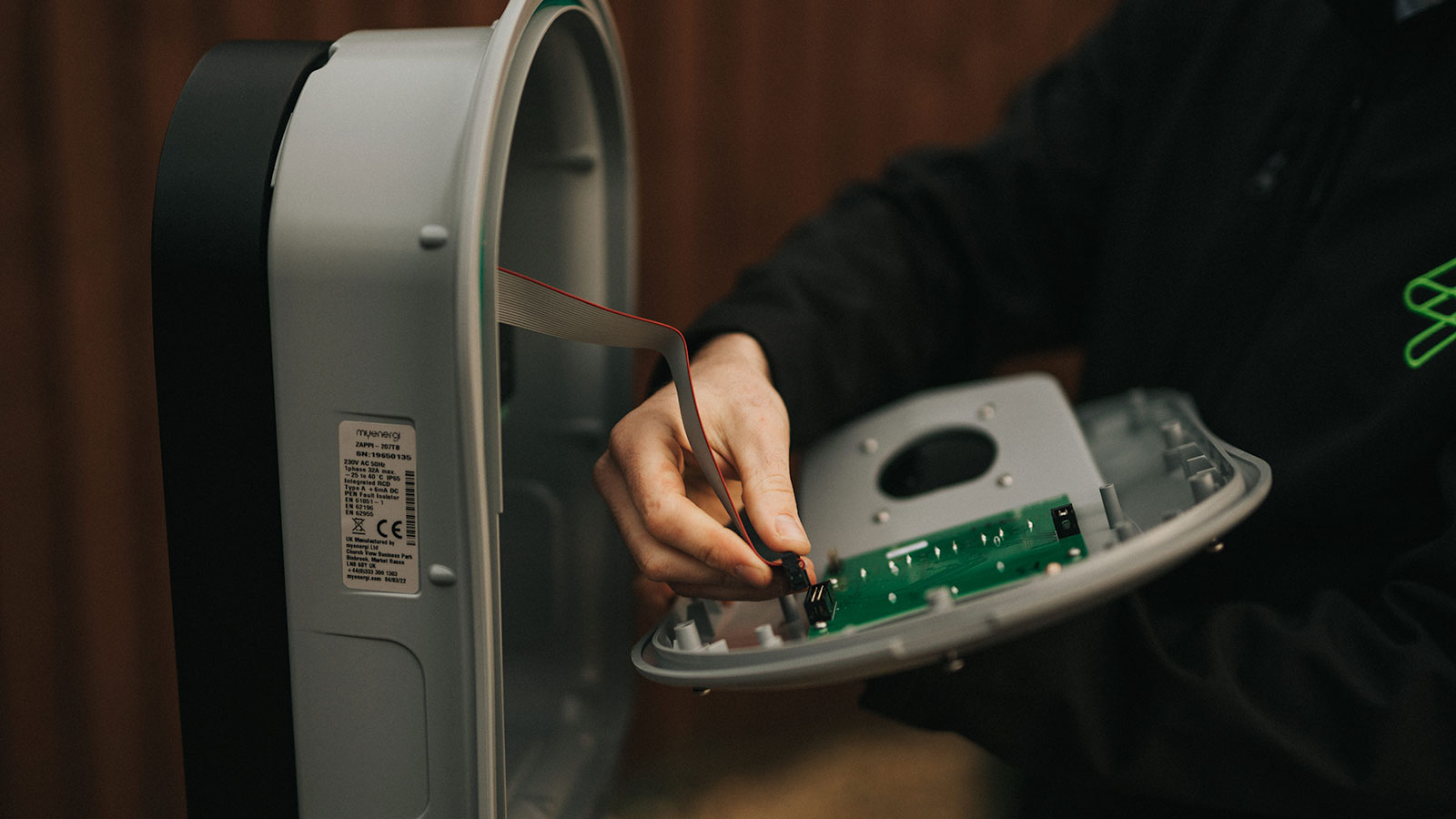Jordan Brompton, Co-Founder and CMO of myenergi, discusses the Government’s recent decision to extend VAT relief for energy-saving materials (ESMs) in residential buildings, explaining why this offers widespread opportunity for independent electrical installers and how to take immediate commercial advantage.
According to research from the Microgeneration Scheme (MSC), 2023 was a record-breaking year for domestic renewable energy and heating installations across the UK. In total, more than 225,500 systems were fitted, including 189,000 solar PV arrays, as well as small-scale wind, hydro, heat pumps and home energy storage.
This boost in popularity is providing a knock-on effect for electrical installers, where rapidly growing demand is leading to a sharp rise in bookings. Indeed, some firms are reporting enquiries increasing tenfold year-on-year, with customers offering to pay over the odds to shortcut waiting lists.
To harness the greatest opportunity from the ESM boom, installers will need to adopt a refreshed focus on clean energy tech and consider changing up their commercial strategy to fully embrace microgeneration. Training and investment is required, but the long-term opportunity is extensive.
The rise in home energy tech
Self-generating renewable energy is a cost effective way for homeowners to reduce reliance on the grid, decrease utility bills and protect themselves from energy market volatility. As adoption rates continue to soar, purchase prices are falling fast. The average cost of solar panels, for example, has dropped by nearly 90% over the past decade, with a relatively standard 3.5 kilowatt (kW) array (perfect for a 3-bed home) now available to purchase for less than £7,000 and capable of saving users more than £400 per annum on their energy bills.
However, while users might find the prospect of streamlining spend and minimising carbon emissions an attractive option, the drawback of domestic renewables is that generation periods are often irregular. Alongside relying upon favourable weather conditions, peak generation is typically during the day when most users are away from home.
As a result, the average consumption rate for self-generated domestic power stands at just 45% in the UK, with some users only able to reduce their reliance on mains energy by less than 25%. Rather than making full use of self-generated energy at home, electricity is often exported to the grid at times of high generation and low use, and then typically bought back (at a higher price) when it’s needed most.
At myenergi, we believe that eco-smart tech is the most effective solution to bridge the gap between generation and consumption. After all, there are a number of products on the marketplace – including our own integrated ecosystem – that enable homeowners to harness up to 100% of their self-generated energy.
So, what does zero-rated tax cover?
In January, the UK Government announced that VAT relief for ESMs in residential buildings would be extended to include home batteries, power diverters, EV chargers and water-source heat pumps, to widen the accessibility and affordability of home green energy tech.
This means that power diverters and solar EV chargers are now in scope for VAT relief when fitted to an ESM, while home batteries are also classified as zero-rated both as a standalone technology and when connected to (or installed alongside) renewable energy generation solutions.
Households can now therefore save thousands of pounds on purchase and installation prices while simultaneously reducing their carbon footprint, streamlining utility bills and taking complete control of their energy use.
These cheaper prices mean higher demand and inevitably more inbound enquiries. Alongside the uptick in direct orders, installers will also benefit from the greater ability to up-sell these products – bolting on a solar EV charger or energy storage device to an existing ESM installation has become a much easier sell with such significant price cuts.
How can installers take advantage?
The opportunity is clear, but it’s important to ask yourself a few questions. Is your business positioned to take advantage? Have you and your team undertaken the necessary training? With so many new products flooding the market, are you aware of the best solutions available for customers?
First and foremost is training. The efficient and effective installation of products like power diverters and energy storage require specialist knowledge, so installers should prepare for a boom in tech installations by seeking the right guidance and product materials.
Additionally, installers can benefit from manufacturer-led training to get the most up-to-date installation advice and in some cases receive the best deals. myenergi’s Product Champion Scheme, for example, brings together a trusted pool of installers that become authorised subcontractors, and offers the ability to receive free product training sessions to enable easier installation, and more effective up-selling, marketing, and customer service, and even financial incentives for installing particular myenergi products.
When it comes to understanding the tech options available, there’s a huge number of comparison tools online. These free services compare the features and benefits of the market’s leading solutions – as well as the cost – making it simple to advise the right products for your customers. Becoming acquainted with the latest, and most advanced solutions, should be a priority.
The future’s bright for electrical installers
The Government is, and will continue seeking to, incentivise decarbonisation solutions, delivered through instruments like tax relief and subsidies.
In October last year, for example, the Government upped the maximum grant available towards the installation of heat pumps from £5,000 to £7,500. Prior to the update, we had already seen a rise in home heat pump adoption – in 2023, heat pump installations grew by nearly a fifth (with over 200,000 heats pumps now installed across the country) – and this number is only expected to continue rising with the availability of larger Government grants.
Looking ahead, we’re expecting further Government incentives to continue driving up consumer demand for domestic renewable tech, so now is the perfect time for independent electrical installers to join the party early and get ahead of the curve.


